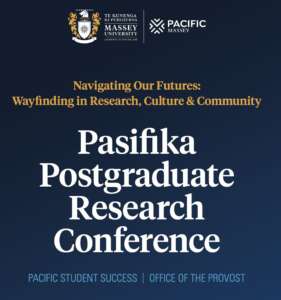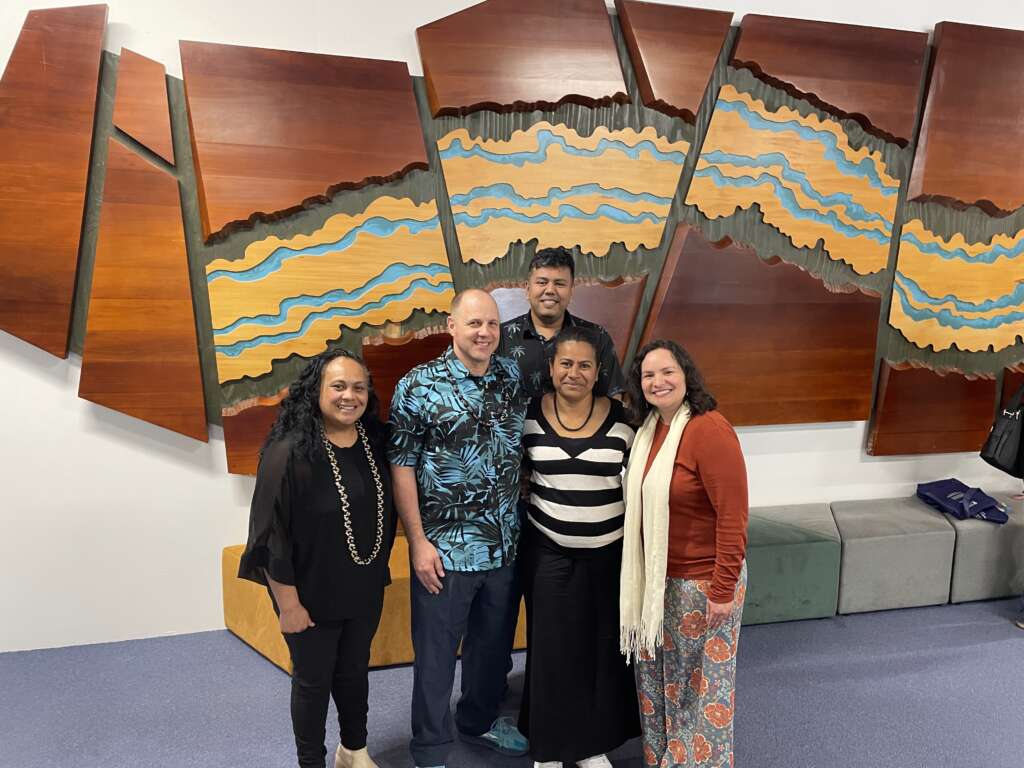Celebrating Pasifika Postgraduate Excellence
We had the pleasure of meeting some wonderful Pasifika postgraduate students last week.

The conference featured 32 presenters, showcasing a rich diversity of PhD and Master’s projects. It was inspiring to see the depth and creativity of research our Pasifika students at Massey are leading — and the meaningful contributions they are making to Pacific knowledge and their communities.
Presentation awards were given to five outstanding presenters, with an additional three students receiving commendations. Ala Le Manuia was proud to support these three commendation awardees with prizes valued at $500 each.
Congratulations to all the students for their achievements and for continuing to strengthen Pacific research.

The topics that the students presented on:
Salanieta Naliva
PhD Candidate (Nutritional Sciences)
Malnutrition and depression are common but under-recognised problems among older adults in Fiji, particularly in rural communities, and both can contribute to functional decline and poor health outcomes.
This study examined factors associated with malnutrition risk among older Fijians, focusing on socio-demographic, health, and physical characteristics. A cross-sectional survey of 299 adults (mean age 69.7 ± 9.3 years) collected information on socio-demographics, health, and physical function.
Malnutrition risk was assessed using the Mini Nutritional Assessment–Short Form (MNA-SF), and depressive symptoms using the Geriatric Depression Scale (GDS-15).
Muscle strength (hand-grip test) and gait speed were measured, and data were analysed using independent t-tests and multivariate regression. Participants with lower muscle strength (26.2 ± 13.0 kg) and slower gait speed (6.2 ± 2.3 m/s) were at greater risk of depressive symptoms. Nutrition risk was higher among iTaukei Fijians (12.3 ± 1.5) and those living in rural areas (12.3 ± 1.5) compared with urban residents (11.7 ± 1.7). Each additional year of age increased nutrition risk by 0.166 (p = 0.008), while living in urban areas was negatively associated with nutrition risk (β = −0.123, p = 0.045).
Depressive symptoms were also independently associated with increased nutrition risk (β = −0.124, p = 0.033).
These findings highlight that older adult of iTaukei descent, those in rural communities, and individuals experiencing depressive symptoms are at heightened risk of malnutrition, underscoring the need for routine screening and targeted dietary interventions in these vulnerable groups.
James Stiefvater
PhD in Development Studies
Otonomi bilong wanem? Autonomy for what?
The interfaces of identity, development, and decentralisation in Papua New Guinea.
This thesis is about the challenges and negotiations in relationships between strongly held, dynamic, and multifaceted local identities with state politics and development policies and processes in Western Oceania.
After nearly 50 years of independence, Indigenous identities still run deep in Papua New Guinea, a resource-rich, multi-ethnic postcolonial state. These local ways of being regularly interface with state-led development, creating connections and tensions between citizens, groups, provinces, and the national government.
Focusing on the subnational entities of East New Britain Province and the Autonomous Region of Bougainville, this paper uses Tok Stori methodology to centre Indigenous voices to explore the interfaces between multi-layered Indigenous identities, state development policies of redistribution of resources, and their role as drivers in movements for decentralisation of powers via distinct political status known as special autonomy.
This examination of the roles of identities and how they are strategised within provincial and state governments will shed light on the contemporary dynamics of the state of Papua New Guinea as we ask the question, “autonomy for what?”
Ravneel Kumar
PhD in Horticulture, School of
Agriculture and Environment
Landraces are important reservoirs of plant biodiversity, containing valuable traits that farmers have selected and maintained over generations. In the Pacific, collection and characterisation efforts have largely focused on carbohydrate-rich staples such as taro, sweet potato, cassava, breadfruit, banana, and yams, while vegetable landraces have received little attention.
In Fiji, the COVID-19 pandemic prompted a renewed focus on agriculture, with increased production to meet rising demand from expanding export markets. A major contributor to this growth has been the export of eggplant (Solanum melongena L.). To supply both export and domestic markets, many farmers have adopted imported seed varieties. However, not all imported varieties are well accepted by growers or consumers, yet their widespread promotion by commercial seed companies often leads to the rapid replacement of local eggplant landraces. This process is compounded by the lack of seed legislation, which allows new varieties to enter the market with little formal evaluation. Biodiversity loss is further accelerated by limited information on the distribution, prevalence, and performance of local eggplant landraces. To address these gaps, a multi-step approach was undertaken to locate and characterise landraces.
Using judgement sampling, potential regions were identified and 30 small-scale farmers were interviewed. Landrace collections were made, and farmers’ trait assessments were compared with responses from eight commercial growers and ten agricultural professionals. Five landraces were characterised at Palmerston, and eleven were phenotyped at the Sigatoka Research Station.
Finally, ecogeographic characterisation was conducted to understand the environments in which these landraces evolved.
The findings provide a foundation for targeted conservation and sustainable use of Fiji’s vegetable genetic resources.